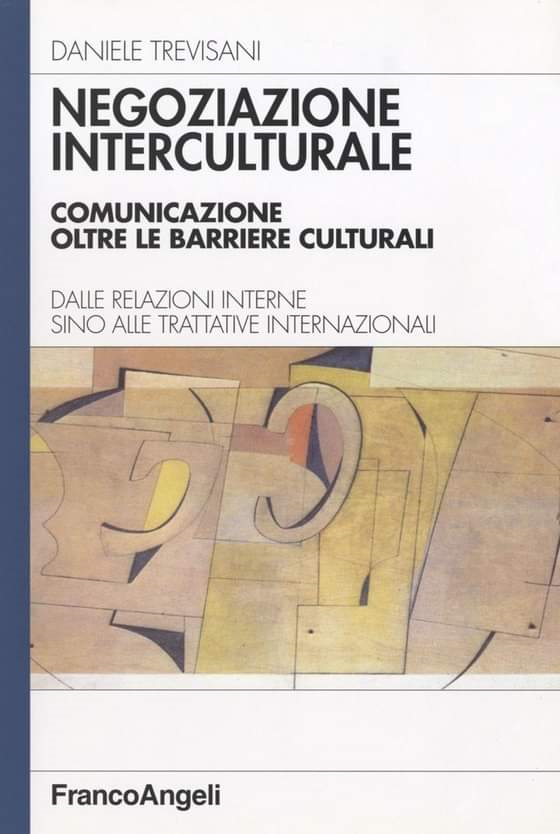© Article translated from the book “Negoziazione interculturale, comunicazione oltre le barriere culturali” (Intercultural Negotiation: Communication Beyond Cultural Barriers) copyright Dr. Daniele Trevisani Intercultural Negotiation Consulting Training and Coaching, published with the author’s permission. The Book’s rights are on sale and are available for qualified Publishers wishing to consider it for publication in English and other languages except for Italian and Arab. If you are interested in publishing or Intercultural Negotiation Training, Coaching and Consulting, please feel free to contact the author from the webstite www.danieletrevisani.com
Vision of Time, Long- vs. Short-Term Time Orientation
The measurement of cultural differences makes sense when it is done in comparative terms, and not in absolute terms. In the following table we show some comparisons between countries with respect to the four dimensions (some of the more extreme scores are highlighted in bold). To create the table, indicators (indices) were produced that measure certain behaviors and attitudes on the four variables:
- power distance index (PDI).
- individualism index (IDV)
- masculinity index (MAS)
- uncertainty avoidance index (UAI)
Tab. 9 – Scores of some countries with respect to the parameters of cultural difference (Hofstede), scale from 0 to 125
| Country | POWER DISTANCE (Low/High) | INDIVIDUALISM COLLECTIVISM | FEMININITY MASCULINITY | UNCERTAINTY AVOIDANCE (Low/High) |
| Australia | 36 | 90 | 61 | 51 |
| Canada | 39 | 80 | 52 | 48 |
| Indonesia | 78 | 14 | 46 | 48 |
| Portugal | 63 | 27 | 31 | 104 |
| Norway | 31 | 69 | 8 | 50 |
| Jamaica | 45 | 39 | 68 | 13 |
| Greece | 60 | 35 | 57 | 112 |
| Japan | 54 | 46 | 95 | 92 |
| Sweden | 31 | 71 | 5 | 29 |
| USA | 40 | 91 | 62 | 46 |
| Venezuela | 81 | 12 | 73 | 76 |
The scores allow us to confirm some common stereotypes, such as the fact that Latin American countries are predominantly male-dominated cultures, Norway is very little, that the US is individualistic, or that the Japanese are a very structured society. Without getting tired of repeating it, these classifications speak in probabilistic terms, and nothing prevents you from finding Venezuelan companies headed by female managers, or collectivistically managed US companies, or extremely competitive and aggressive Norwegian managers, and other major deviations from cultural stereotypes.
Vision of time, Long- vs. Short-Term Time Orientation
Time Orientation distinguishes cultures based on the propensity to reason and plan in the long run, vs. an orientation “to the day”, and is related to dimensions such as spiritualism vs materialism, the religious concept of life, knowing how to live in meditative phases or only in active phases. Hofstede’s studies also distinguish between monochronic and multi-chronic time. Monochronic time has the following characteristics
- the tendency to do one thing at a time – one after the other, in a linear way, a long-term orientation, dependence on agendas and calendars;
- in monochronic time, precision is generally rewarded;
- time is often scarce, we are often late. On the other hand, multicronic time is a multi-tasking, non-linear time, a short-term orientation, a life lived without an agenda and calendar, precision is something suspicious or at most irrelevant, the sense of time is cyclical (as in Hinduism ).
In the ALM method there is a tendency to distinguish the culture of the times by using in a disjoint way the evaluation of single psychological times (monochronic) or the condition of living in multiple psychological times (multicronicity), concentration on the task (monotasking) or application on several tasks (multitasking).


© Article translated from the book “Negoziazione interculturale, comunicazione oltre le barriere culturali” (Intercultural Negotiation: Communication Beyond Cultural Barriers) copyright Dr. Daniele Trevisani Intercultural Negotiation Training and Coaching, published with the author’s permission. The Book’s rights are on sale and are available for any Publisher wishing to consider it for publication in English and other languages except for Italian and Arab whose rights are already sold and published. If you are interested in publishing the book in English, or in Intercultural Negotiation Training, Coaching and Consulting, please feel free to contact the author from the webstite www.danieletrevisani.com
For further information see:
- Website of Studio Trevisani Academy For Business Training, Coaching e Mentoring, in Italian
- Website Dr. Daniele Trevisani in Italian
- Dr. Daniele Trevisani – Website in English
- Comunicazioneaziendale.it Italian website on Business Communication
- Medialab Research Cultural Association for Communication Research
- Dr. Daniele Trevisani Linkedin Profile in English
- Facebook Channel
- YouTube Channel









